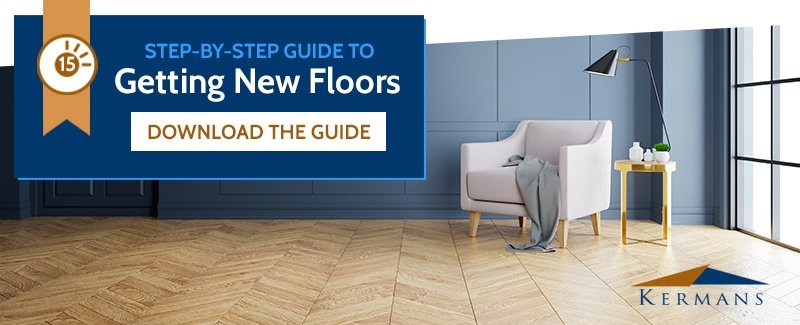Finding your footing: Common flooring terms explained
Published: August 30, 2018
Shopping for new floors, but feeling like you need to go back to school just to understand all the flooring terminology used to describe materials and styles?
Put your backpack down because we are here to help. Read on for definitions and answers to some of the most common questions our design consultants hear from customers.

A
Acclimation — The changes that flooring (especially hardwood) goes through after installation. Hardwood will shift and expand as it adapts to the climate and humidity of a room.
Area rug — A woven floor covering that protects a portion of a room. Area rugs are the most versatile flooring product available, and the addition of one makes it easy to change the character of your room. Download our area rug placement guide »
B
Berber — A low-pile type of carpet known for being extremely durable.
Burl — Natural knots and twists in the grain of hardwood planks.
C
Carpet — Woven-fiber floor covering—available in a wide variety of colors, textures, and styles—that gives your home a warm and comfortable feeling. Download our carpet buyer’s guide »
Carpet padding — The layer of material used underneath your carpet to make it softer underfoot while also providing protection from foot traffic damage and subfloor friction.
Carpet pile — The height and density of carpet fibers. Carpet can be high- or low-pile (like berber) or anything in between.
E
Engineered hardwood — A natural wood veneer and wood core layered with laminate for increased durability.
F
Floating — A type of hardwood or resilient installation where the floorboards “float” on the subfloor because they are not nailed down.
Flush reducer — A spacer that can be placed between flooring of two different heights to create a smooth and level transition (e.g., a flush reducer would be installed between a room with carpet that leads into a room with hardwood).
G
Glaze — A shiny, protective coating found on some types of tile, glaze makes tiles easier to clean and gives them a smooth, modern look.
Grout — The material used between tiles that holds them together and helps keep out dirt and moisture.
H
Hardwood — Traditional solid wood flooring that comes in a large variety of wood types, stains, and plank widths. Download our hardwood buyer’s guide »
L
Luxury vinyl — A type of vinyl flooring that is durable, cost-effective, and mimics the look of hardwood or stone. Luxury vinyl, also known as resilient, comes in planks and tiles.
M
Moldings — Trim or transition pieces used between rooms with different types of flooring or along the base of walls.
P
Patina — The change in color that naturally occurs in solid hardwood flooring over time.
Parquet — A style of laying hardwood flooring in geometric patterns that often uses small pieces of wood of different stains or varieties.
R
Radiant heating — A type of cost-effective, energy-efficient heating system that can be installed beneath flooring to heat your home using electricity, water, or air to distribute warmth.
Resilient — Also known as luxury vinyl, resilient flooring is a type of vinyl flooring—available in planks and tiles—that can mimic the look of hardwood or tile, and some options are 100% waterproof. Download our resilient buyer’s guide »
Rug pad — The material between your area rug and the floor that helps keep it from shifting and reduces wear and tear on both the rug and the flooring beneath it.
S
Subfloor — The functional layer between your flooring and the floor joists (or foundation) of your home that holds up the flooring that you walk on day-to-day.
T
Threshold — The space in a doorway or between rooms, a threshold is often where flooring types change.
Tile — A versatile flooring material commonly made of natural stone, ceramic, or glass that is durable, easy to care for, and comes in a variety of materials and styles. Download our tile buyer’s guide »
U
Underlayment — The material between the subfloor and flooring material, underlayment is common with floating flooring installations, and it acts as a protective padding and noise reducer.
W
Waterproof composite flooring — Some resilient flooring is made of a composite that is 100% waterproof to give you the look of hardwood or natural stone with the benefit of easy care.
